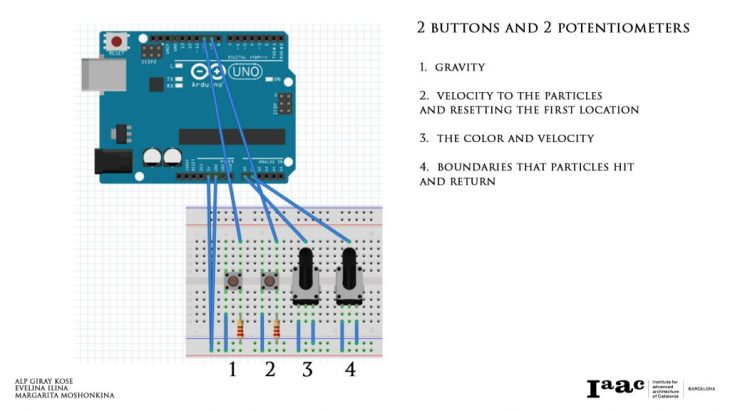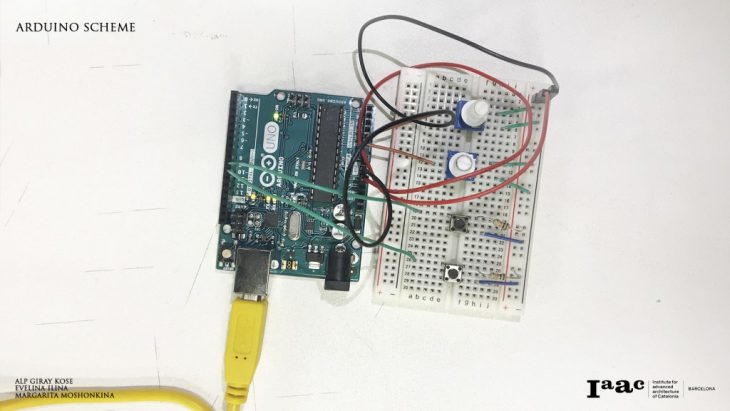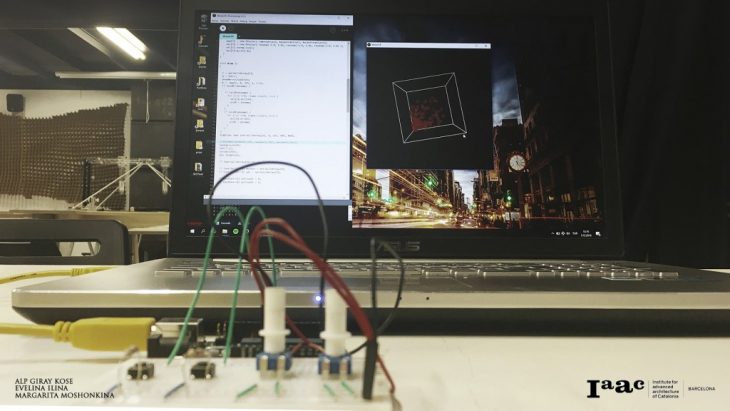Arduino and Processing Assigment 03//
Students: Alp Giray Kose, Evelina Ilina, Margarita Moshonkina
Tutors: Angel Muñoz and Angelos Chronis.
Brownian motion is the random motion of particles suspended in a fluid (a liquid or a gas) resulting from their collision with the fast-moving atoms or molecules in the gas or liquid. Thereby it is among the simplest of the continuous-time stochastic (or probabilistic) processes, and it is a limit of both simpler and more complicated stochastic processes.
The aim of the exercise is to create a computer simulation which imitates the Brownian motion. There is a famous science museum called CosmoCaixa which offers a great variety of activities to give a greater insight into the world of science where everybody can see a clear example of the Brownian motion simulation. Exercise is a conventional simulation of random sphere movement that is activated by an explosion of the cube. (Yes, it is also a Big Bang simulation. And explode things is fun. Unless it is for real). Once the movement is running, speed, velocity, rotation and color could be controlled with potentiometers. Besides the physical phenomenon of Brownian motion exercise contain gravity function which resets the move.
This project used 2 buttons and 2 potentiometers to get data from Arduino. These buttons one for giving velocity to the particles and also resetting the first location. Another one is to add gravity. The first potentiometer is to get the colour and velocity. Particles are getting red and fast when we increase the potentiometer. The second potentiometer is for boundaries that particles hit and return. We showed that boundaries with simple no fill box with stroke.
Basically, this project draws 3 circles for each sphere and when button pressed they start to move according to their color. Red is fastest and blue is slowest. When other button pressed gravity affects all of them and they start to bounce. When the second potentiometer changes, boundaries affected by it. If a particular finds itself out of the box it always tries to reach inside by following the closest path to the box.

Arduino Giagram

Arduino Scheme

Arduino and Processing